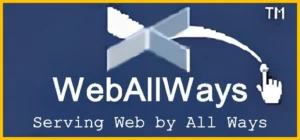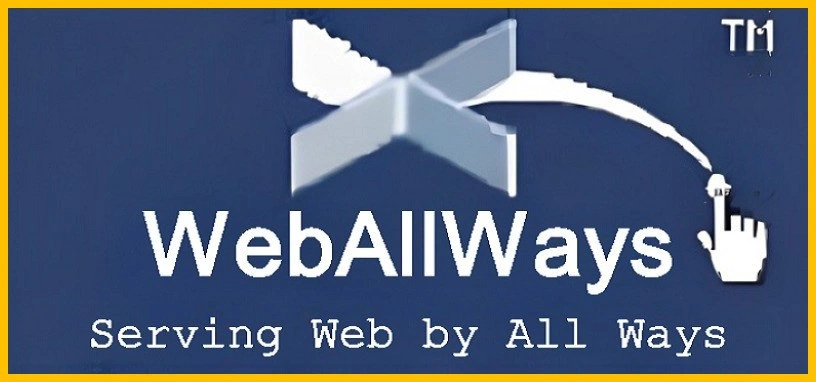
Trying to improve your SERP rankings? You are where you should be. To improve your search engine ranking and increase traffic, implement these 15 quick SEO wins and learn how to do SEO for quick ranking results. Each should take you an hour to complete. Let’s start now.
Boost important pages with internal links – Internal connections are frequently disregarded. However, when used properly, they can improve your pages’ Google page performance. What makes them significant? Two main causes are as follows:
PageRank is a known Google ranking factor, so it helps it flow around your website.
By creating or acquiring high-quality links, you can direct PageRank to your website. However, because most webmasters are typically transactional, they will rarely want to link to your most crucial pages. By using the middleman method, you can “bypass” this by creating internal links to your money pages and then linking to informational content.
How is this done? Make a list of all of your “money” pages— those that generate income— first. Your product, service, and category pages are probably on these pages. Finding pertinent, contextual internal linking opportunities is the next step. Using the website, Google search operator, is the simplest way to accomplish this. For instance, we’ll probably look for the following when adding internal links to our free backlink checker tool:
Then, after reading through each of these pages, we’ll add pertinent anchor text and internal links to our backlink checker.
Of course, we’ll conduct additional searches as well. Use various searches to surface pages where you might be able to add internal links; use your imagination here. For instance, we could look up terms like “backlinks,” link building,” link building tools, etc.
Alternatively, you could just register for Ahrefs Webmaster Tools (AWT) for free and have a crawl performed on your website. Visit the Link opportunities report in Ahrefs’ Site Audit after the crawl is complete.
You will see pertinent link opportunities on your website in this report. Search for your money pages with the Target page filter.
The suggested internal link opportunities should then be examined. Include your internal links if necessary.
Install a caching plugin – Slow pages are bad for business in addition to being a ranking factor for Google. Nearly 70% of customers acknowledge that page speed affects their willingness to make an online purchase, according to Unbounce. Installing a caching plugin is one way to increase the speed of your website. In essence, caching is a method for temporarily storing copies of files so that visitors can receive them more quickly. We advise downloading a plugin like W3 Total Cache if you use WordPress to enable caching.
Reclaim lost links – Backlinks that point to a dead page are useless if there are any of them. Because it is dead, it cannot rank and cannot improve the ranking of your other pages. You ought to fix these pages as a result. How to locate these pages on your website is as follows:
In Ahrefs’ Site Explorer, enter your domain.
Report on the Best by Links
404 not found is the HTTP code filter.
These pages should be redirected to the most recent, pertinent ones. Or, if they’re still relevant, think about reviving them.
Optimize the title tags of your top-ranking pages – Our study found that Google only rewrites title tags 33.4% of the time, even though it may now rely less on them. In other words, two-thirds of the time, the title that Google displays on SERPs matches the page’s title tag. Still require eye-catching title tags for translation. However, let’s give them priority for high-ranking pages.
Why? A compelling title tag can distinguish one page from the others if it is already ranking highly enough (and thus is seen by searchers). How to locate these pages is as follows:
In Ahrefs’ Site Explorer, enter your domain.
Visit the report on organic keywords.
The position filter should be set to 2– 5.
Better title tags can be used to give some of these pages a boost. Make a title tag more alluring by using these suggestions:
Add power words – People’s emotions are tapped into by strong words. Examples include “rock-solid,” remarkable,” and others. See if you can add one or two to your title tag by looking at this list.
Add parentheses – Parentheses function similarly to your dish’s final salt sprinkle. For an illustration, take a look at this blog post’s title…
Use curiosity – People click out of curiosity to find out more. Don’t go overboard, though! It’s bad clickbait. Dishonesty is also.
Optimize for low-hanging featured snippets – These days, you can probably find a featured snippet if you Google anything. They are quotes from the most popular pages that Google uses to display the “answer” in the SERPs. What’s the best part? By simply grabbing the featured snippet, you can frequently advance to position# 1.
In theory, that is. We’ll want to give priority to those because, in reality, some are simpler to win than others. We specifically want to focus on these opportunities: keywords with respectable monthly search volumes, where you already have a featured snippet on Google and are currently ranked in the top 10. How to locate these keywords is as follows:
In Ahrefs’ Site Explorer, enter your domain.
Visit the report on organic keywords.
The Position filter should be set to 1– 10.
To filter for keywords that cause featured snippets “where the target doesn’t rank,” use the SERP features filter.
Find opportunities to capture the featured snippet by looking through the list. Next, take a look at the featured snippet. Check to see if you can add to or modify your page’s content to qualify for the featured snippet. For instance, after the snippet, we place second for “Google operators”:
The definition that we omitted from our page is visible in the snippet. To win the featured snippet for ourselves, we can try adding a definition.
Sign up for HARO – A free service that connects journalists with experts is called Help a Reporter Out (HARO). The process is as follows:
You register for HARO.
Every day, HARO sends you three emails from journalists seeking professional quotes.
You’ll typically receive a mention and backlink from the website if the journalist chooses your quote.
Obtaining high-quality backlinks from reliable websites is simple. We advise setting up some Gmail filters so you only see the pertinent emails because the majority of them are probably irrelevant to you. How to do it:
Select the filter for search options.
Set haro@ helpareporter.com as the “From” field.
“Subject” should be set to “HARO.”
Use the OR operator to list multiple keywords here, then set “Has the words” to the keywords you want to monitor.
It only requires looking through your inbox to see if there are any stories you can use as a source once the filter has been set up. Only respond to questions where you have the necessary expertise. You’ll have the best opportunity to stand out and appear on these websites if you do that.
Sometimes all you have to do to improve the rankings of your content – which is currently ranking decently— is to quickly refresh it by closing any content gaps. A content gap is what? Competing pages are essentially ranking for keywords other than yours. Additionally, there are times when they are crucial subtopics that you omitted from your original post. How to spot content gaps is as follows:
In Ahrefs’ Site Explorer, enter your domain.
Visit the Content Gap tool.
In the top section, include a few competing URLs.
In the bottom section, include the post’s URL that you want to promote.
Check the results to see if you missed any subtopics.
For instance, it seems that we neglected to cover two subtopics in our post on evergreen content:
Advertisements for Evergreen
Social media content that is evergreen
A SIDENOTE You might want to think about rewriting your content if it isn’t ranking well at all.
Find new content ideas from competitors – Not only can a content gap analysis help you with your rankings. Finding keywords that your rivals are ranking for but you aren’t is also helpful. Follow the aforementioned strategy. However, this time around, put your competitors’ homepages (or blogs, if you’re specifically targeting informational content) in the top section and your homepage or blog (if applicable). Check the list to see if you can target any relevant keywords.
Find low-competition keywords – Some keywords are more difficult to rank for than others due to the presence of competition. To increase your chances of ranking, you should keep an eye out for keywords with less competition. How to locate these keywords is as follows:
Use Ahrefs’ Keywords Explorer to enter one or a few pertinent keywords.
Visit the report on matching terms.
A maximum of 10 is allowed for the Keyword Difficulty (KD) filter.
Select the items from the list that are pertinent to your website by looking through it.
Get a Google Business Profile – A local listing with details about your company is called a Google Business Profile. The data you enter after claiming it may appear in Google Maps and Google’s web search results. This is particularly crucial if your company is local. A lot of SEO experts believe it to be the most crucial local SEO ranking factor. It only takes 30 minutes (or less) to claim your Google Business Profile, which is fairly simple.
By implementing and deeply analyzing the above mentioned techniques, you can easily learn How to do SEO for quick ranking results.
